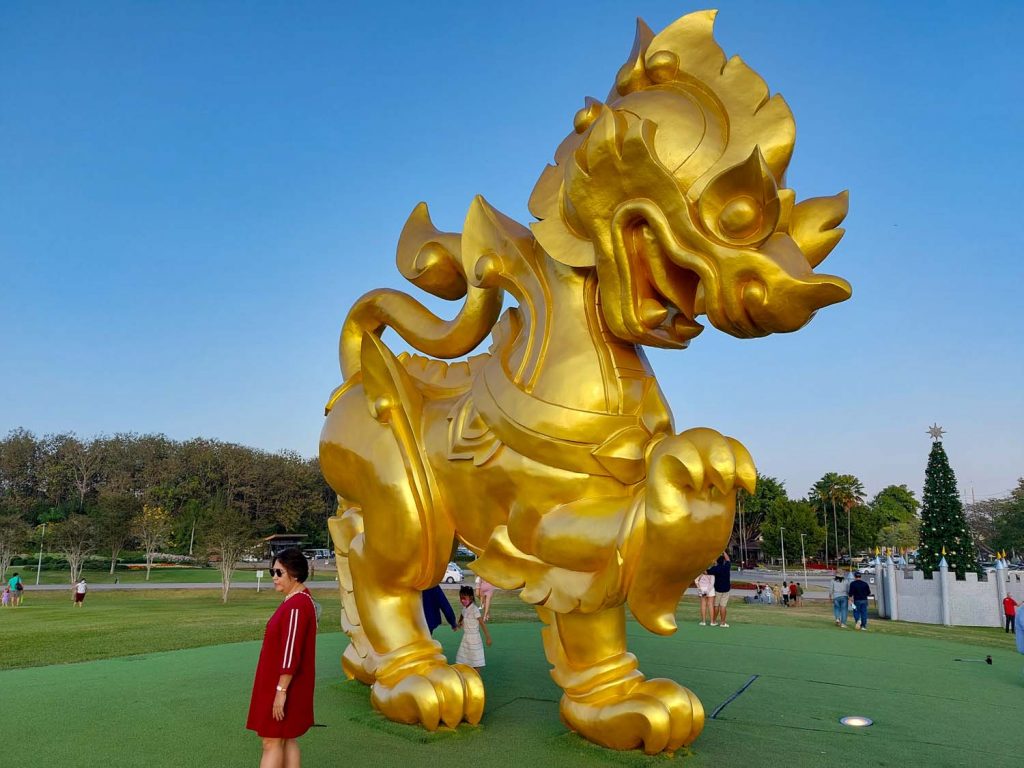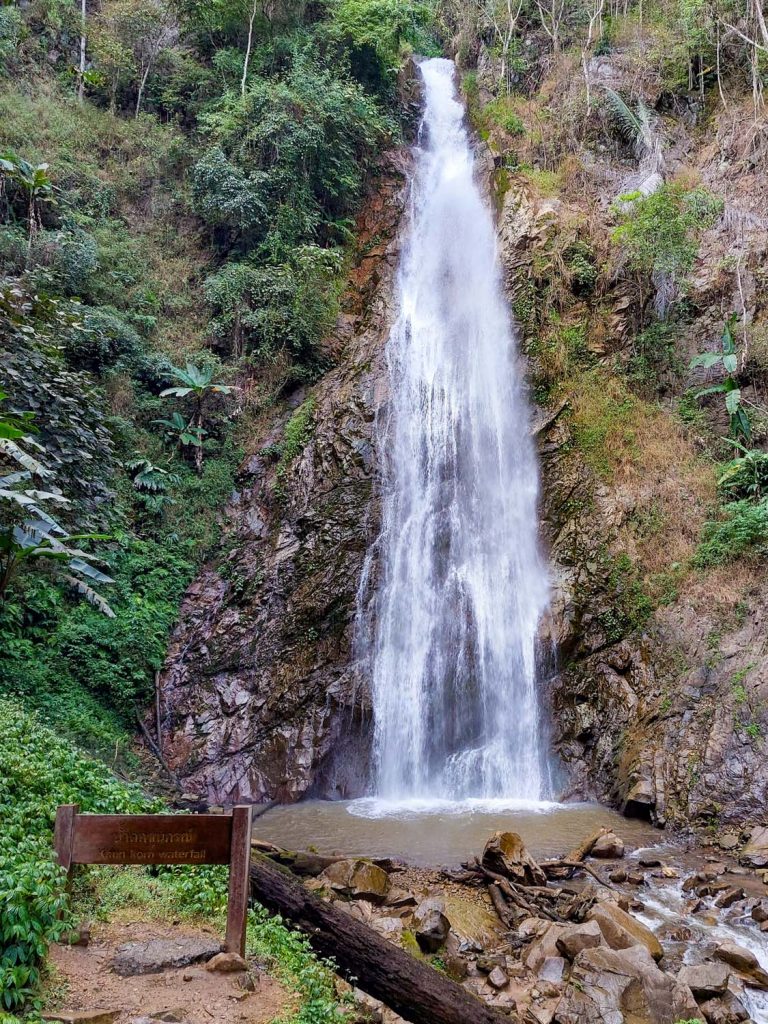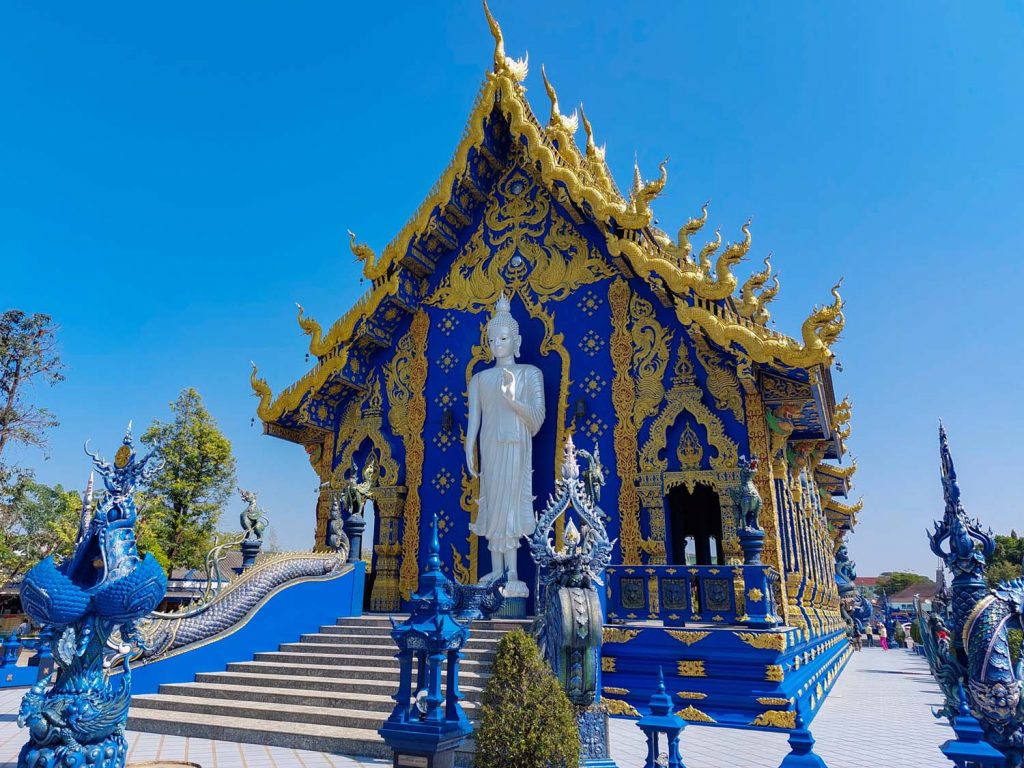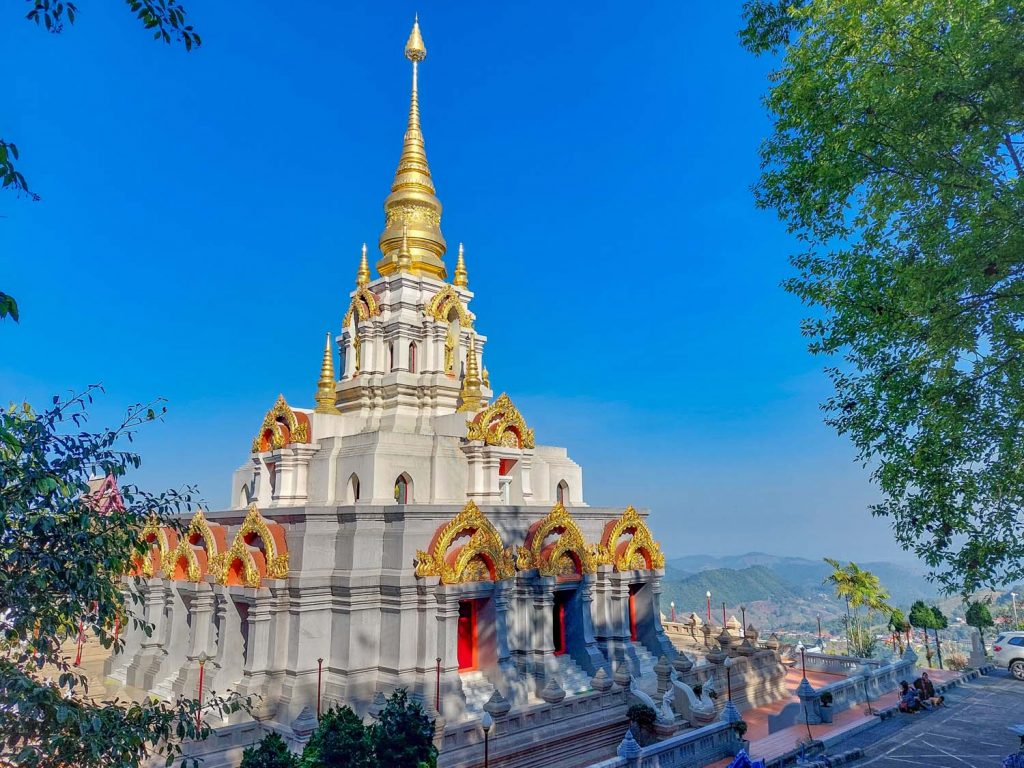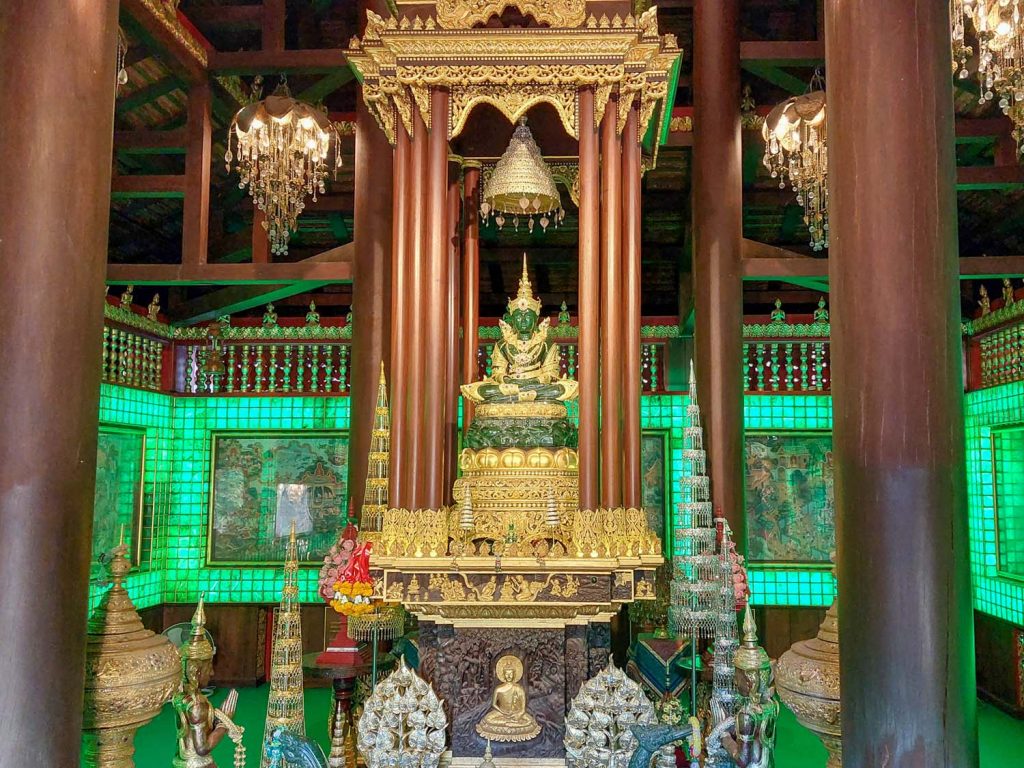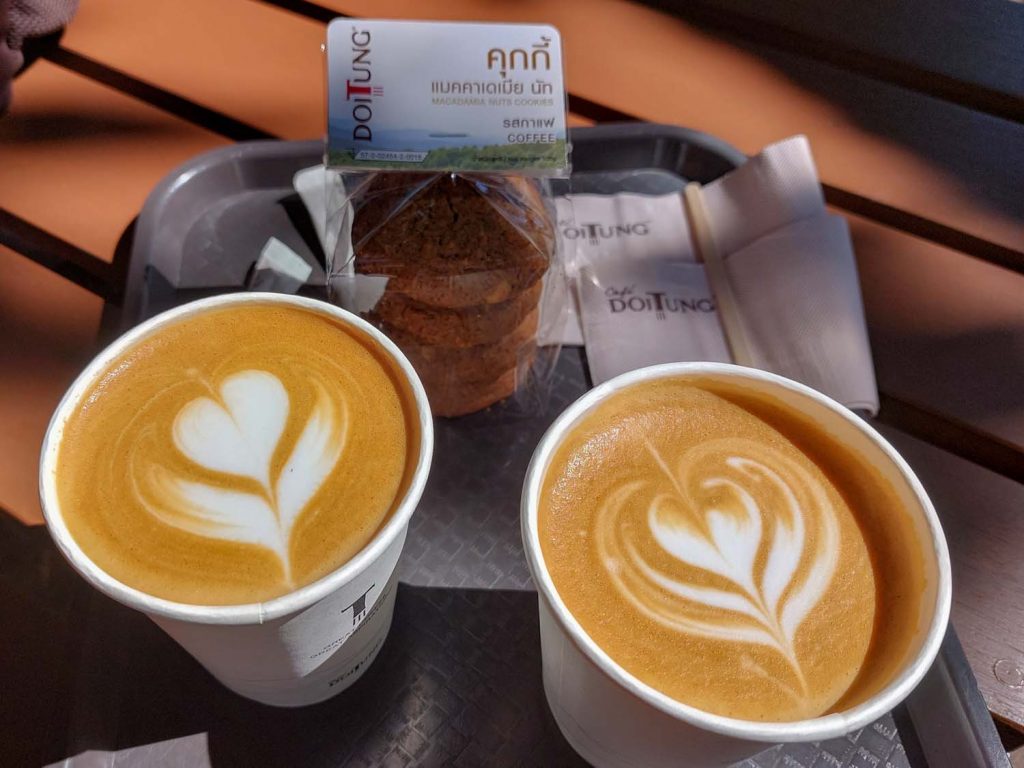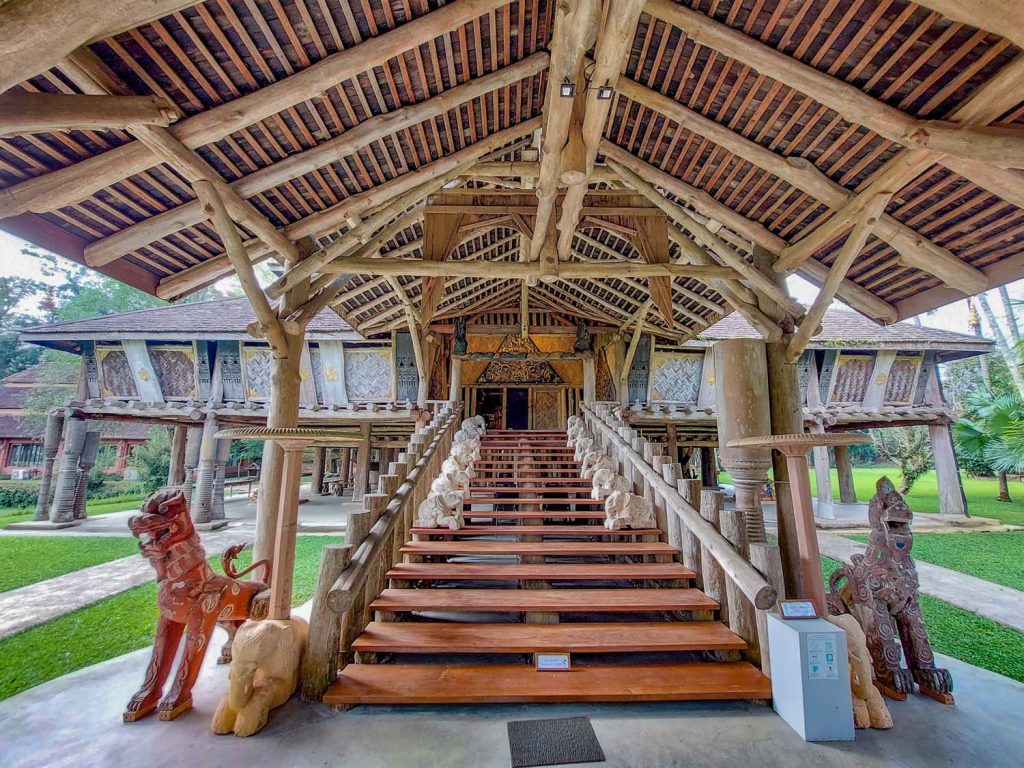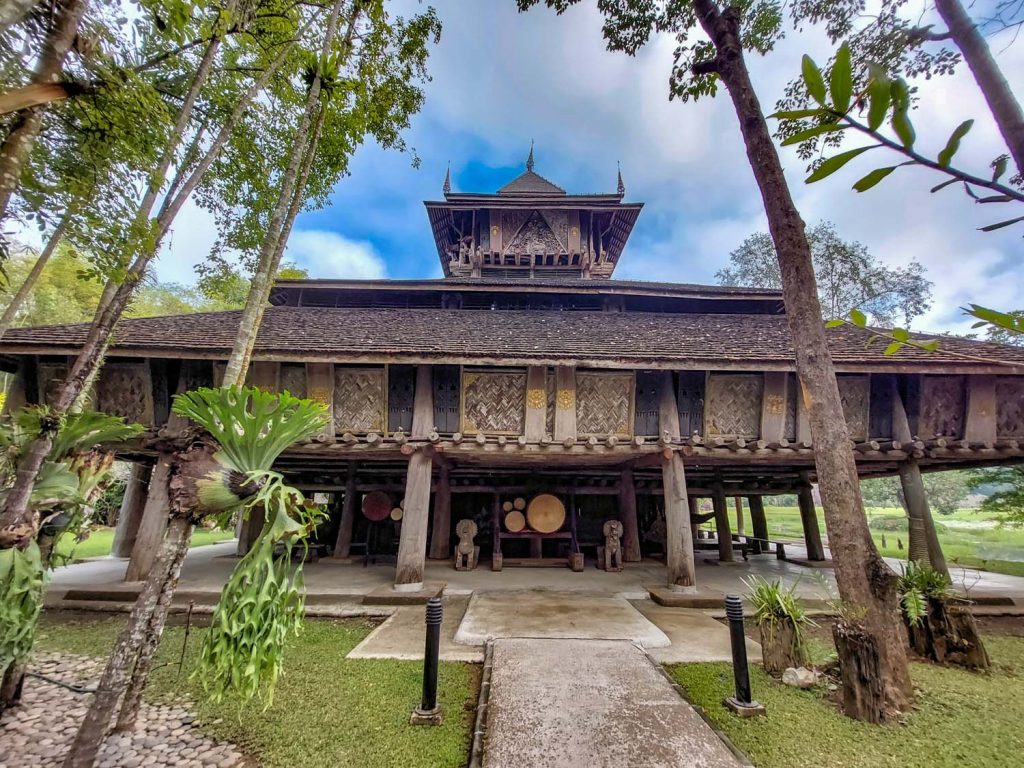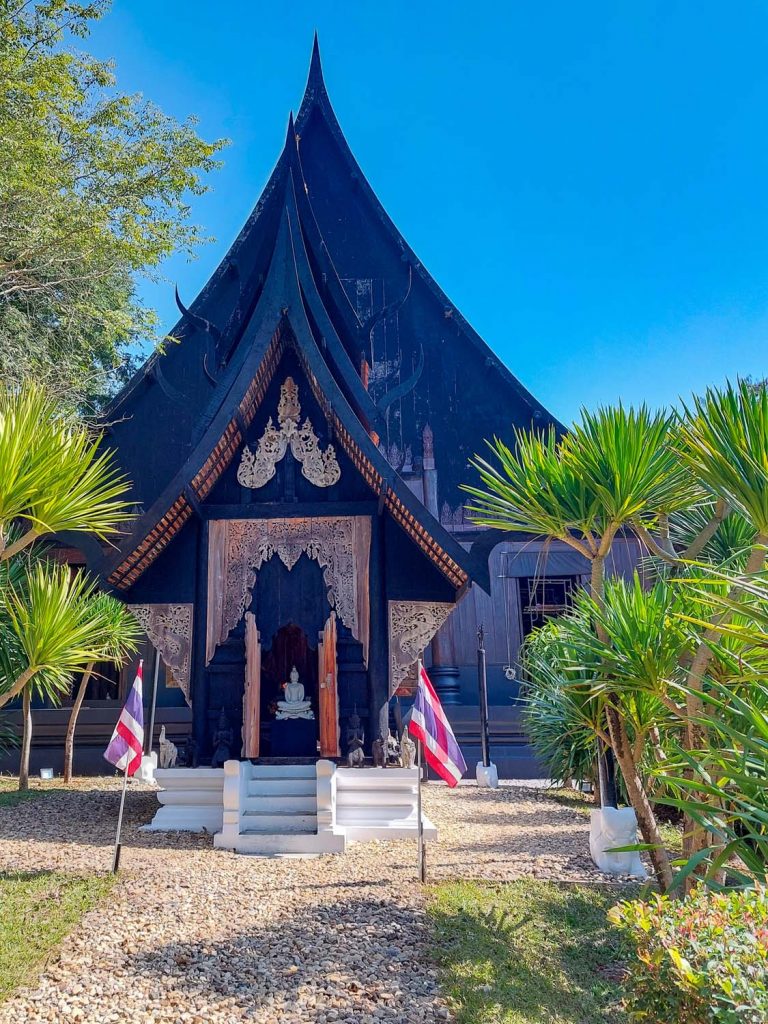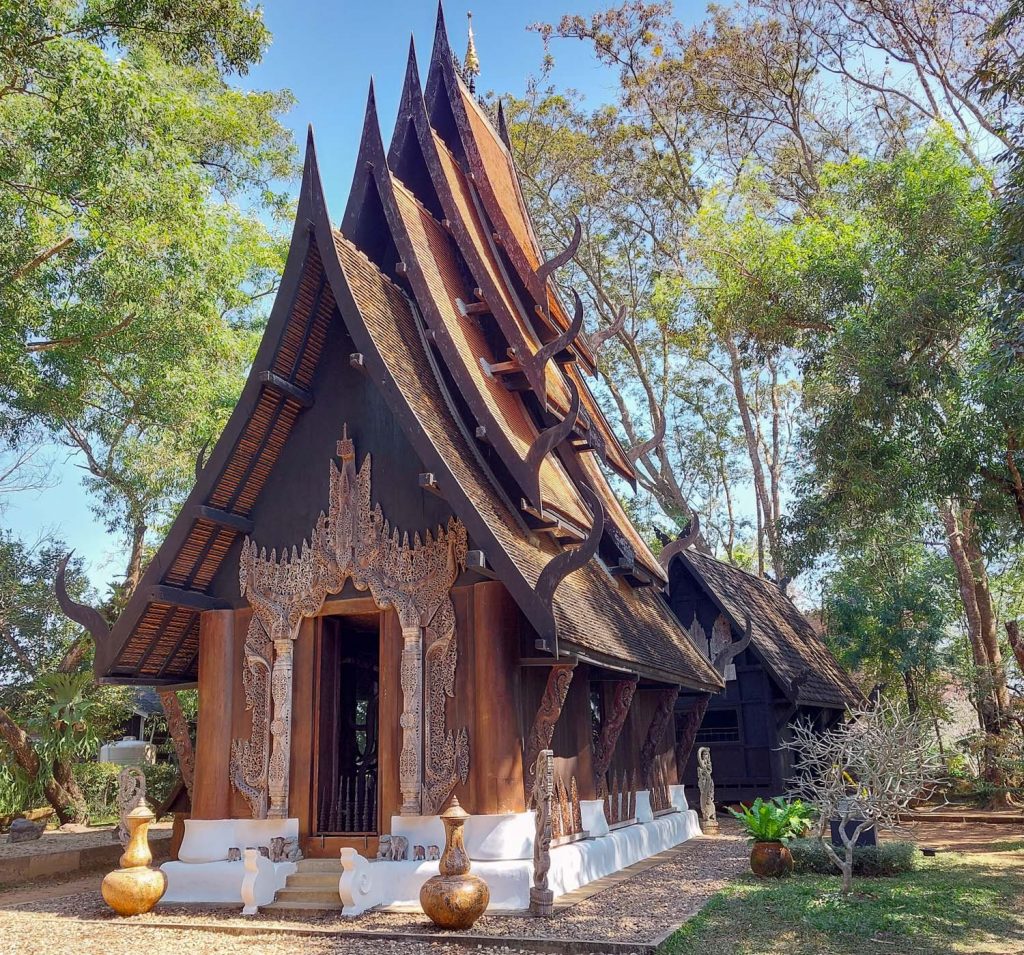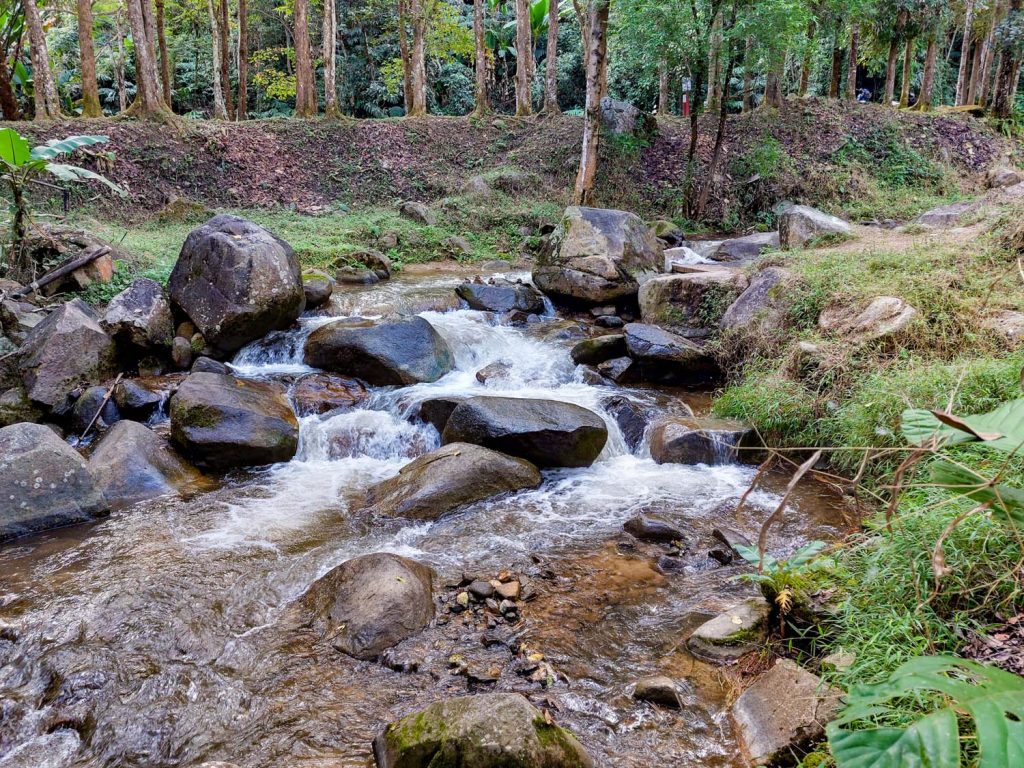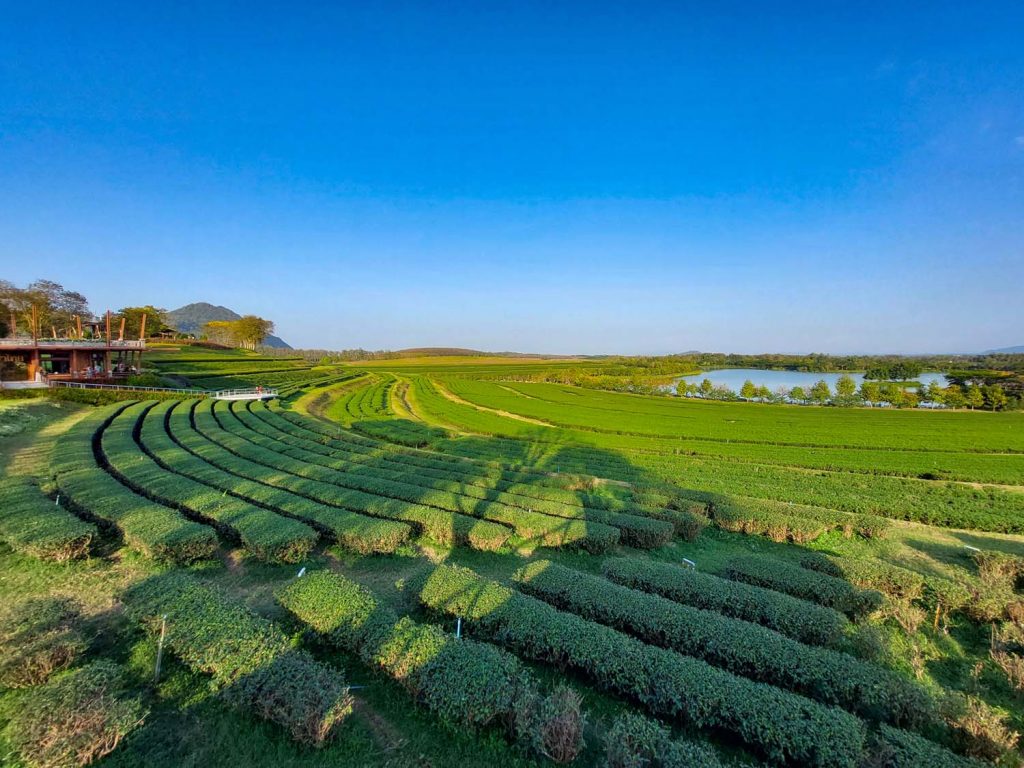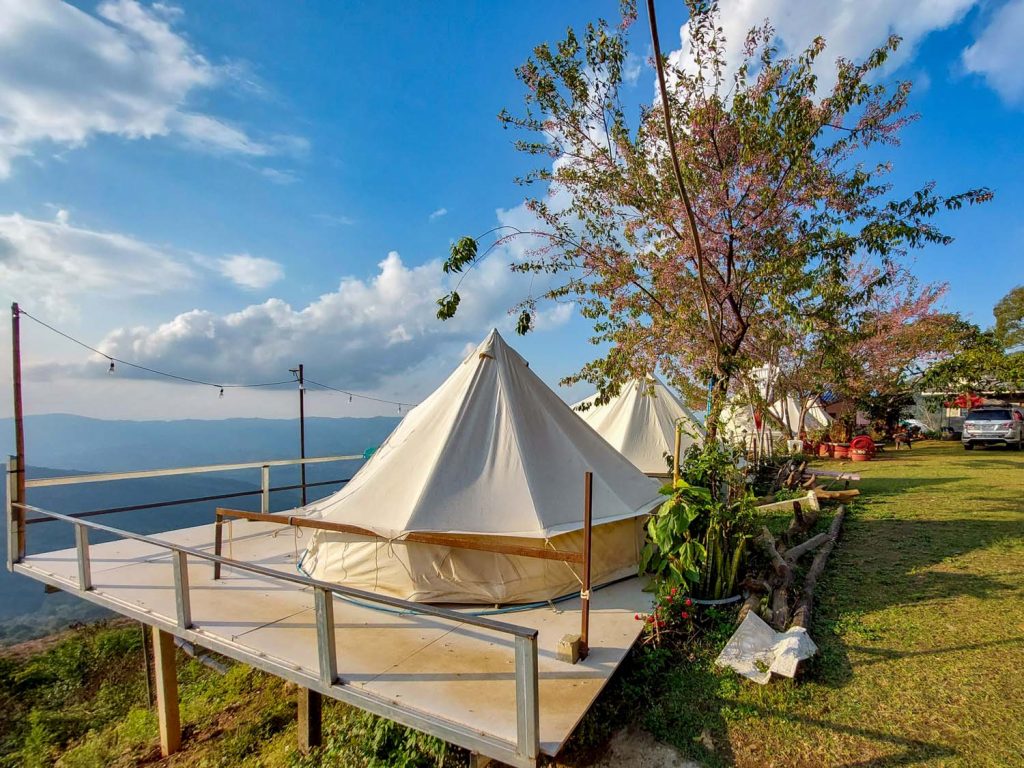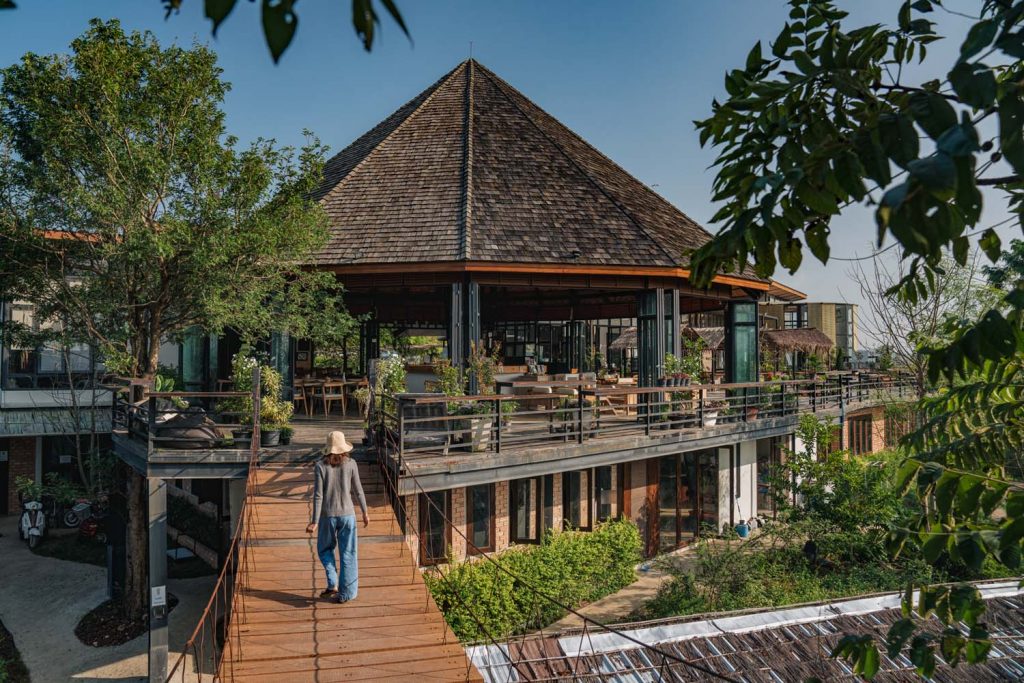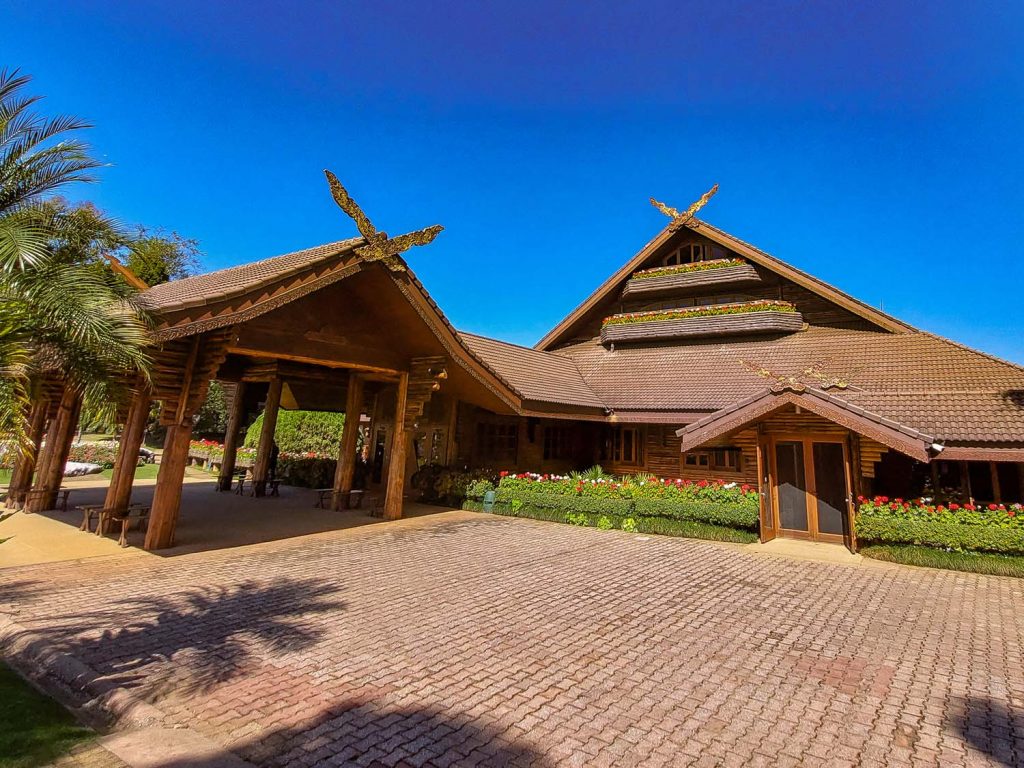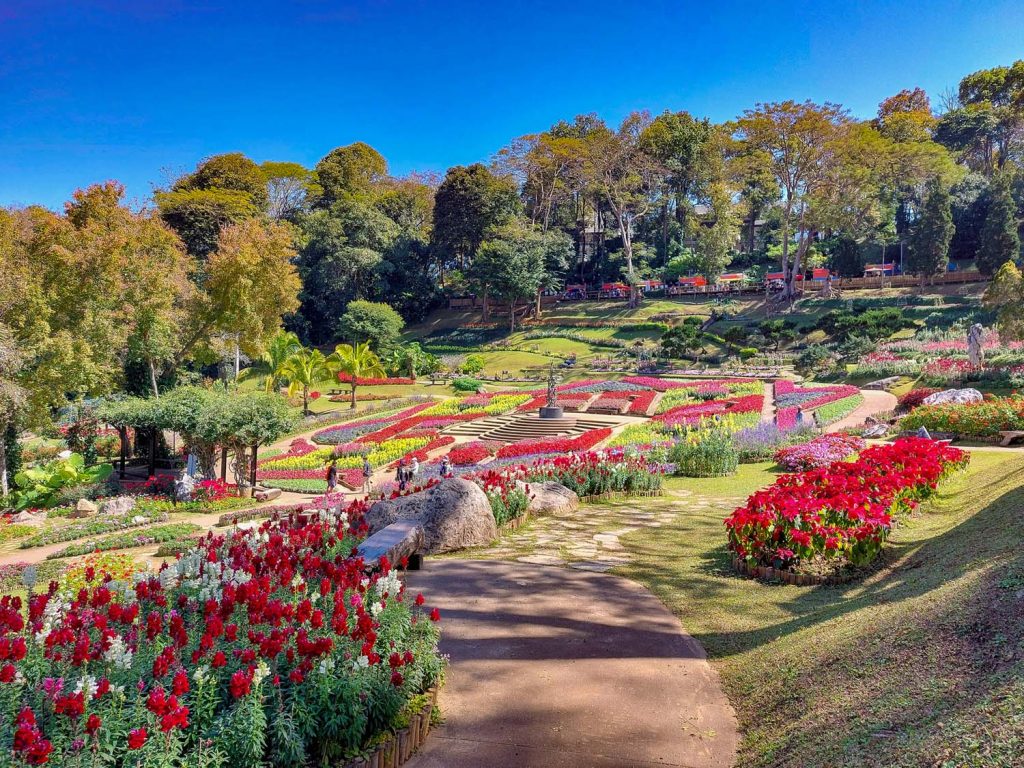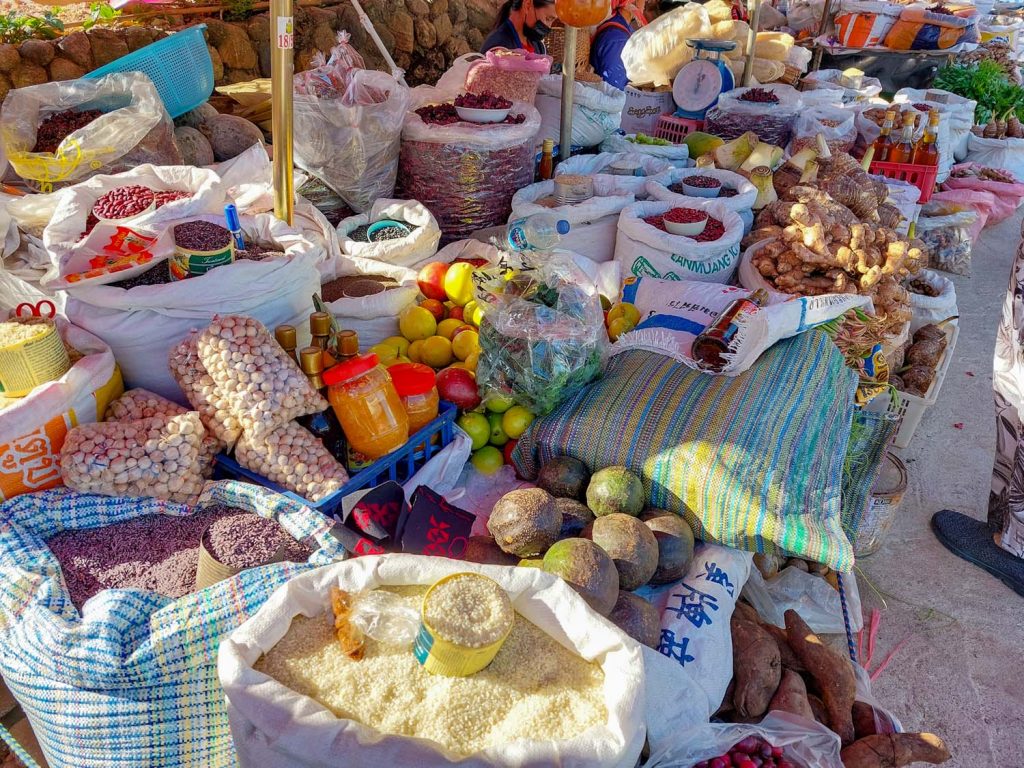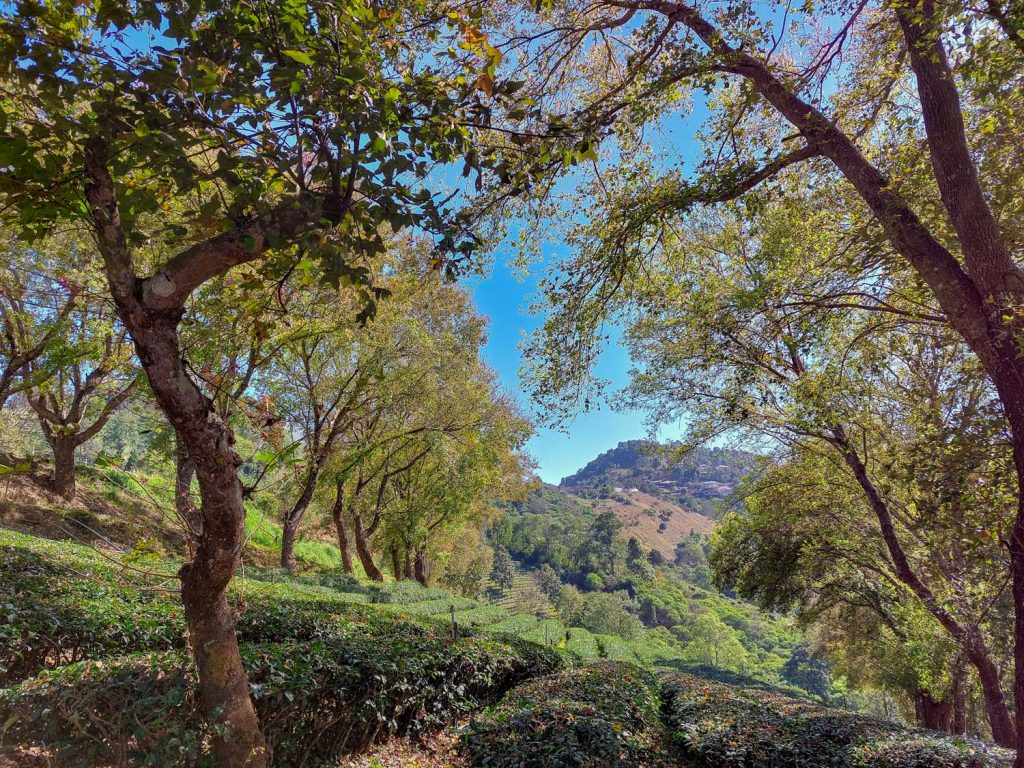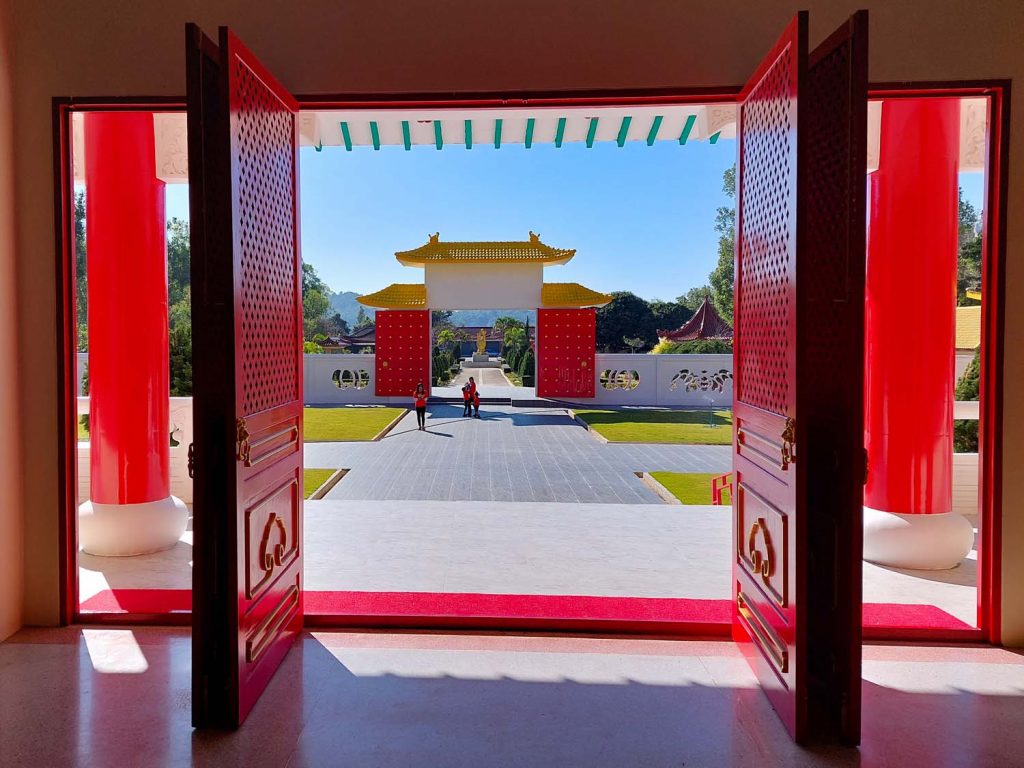Chiang Rai, the lesser-known sister to cosmopolitan Chiang Mai, is well worth exploring, writes guest writer Michael Cullen in this detailed guide to road-tripping this northern Thailand region.
With its more laid-back style, visitors experience eye-popping temples, abundant nature, organic foodie trails, cultural insights into the Hill Tribe communities, and easy access to the Golden Triangle region, to name just a few offerings.
A self-guided road trip is a great way to delve into lesser-explored northern Thailand and, for couples, create cherished memories from shared holiday experiences.
Given the breadth of opportunities on offer, spending seven days (or more) exploring greater Chiang Rai would be easy. As a great starting point, spend a few days enjoying this small, amiable city, before heading further afield.
Ancient Lanna Capital & Gateway to The Golden Triangle
Thailand’s northern-most province borders Myanmar and Laos, with the border tripoint just under 70 kilometres northeast of the Chiang Rai city. The provincial capital, Chiang Rai, is serviced by direct flights from Bangkok, making the city and region easy to access. Chiang Mai, around 200 km southwest, is an alternate access point.
The region boasts a long history of smaller kingdoms, while the city of Chiang Rai was founded in 1262 by King Mengrai. It was temporarily the capital of Mengrai’s Lanna Kingdom until being superseded by Chiang Mai.
Covering approximately 11,700 square kilometres, the mainly mountainous region has peaks rising to 1,500 metres above sea level. Inhabiting the highlands are ethnic hill tribes like the Akha, Lahu, Karen, Hmong, and ethnic Chinese settlers. Apparently, the CIA coined the name Golden Triangle for the overlapping mountains of the three adjacent countries. It was one of the world’s largest opium-producing areas from the 1950s to the early 21st century.
Chiang Rai city lies on alluvial plains on the banks of the Kok River. The ‘plains’ rich soils produce a vast range of vegetables and fruits, while coffee, tea, nuts and fruit plantations hug the mountains. Over recent years, the adoption of organic production has seen the region’s agricultural reputation grow significantly.
Chiang Rai City Highlights
City Centre Temples
Within about two square km of the city centre, you can find seven Buddhist temples and numerous markets. Here are our top picks.
Near the Clock Tower is one of the most interesting temples, Wat Ming Muang, because it is so different from any other in town. Additionally, Queen Ta La Mae Sri, and not her husband King Mengrai, is said to have founded this temple. According to the legend, 14th century Wat Phra Kaew’s stupa was struck by lightning, revealing the highly revered Emerald Buddha, now enshrined at Wat Phra Kaew in Bangkok. Within the temple grounds is a compact museum housing a replica. From the same era, Wat Phra Singh, adjacent to the Post Office, houses a replica of the holy statue Phra Buddha Sihing, the original now enshrined in Chiang Mai’s Wat Phra Singh.
Markets
Markets provide tremendous insight into the region’s produce, people, local food styles and daily life. They are a buzz of activity, a riot of colour, a cacophony of noise, and stimulate a sense of intrigue and sometimes bewilderment.
Ngam Mueang Market (5 am to 6 pm) off Ruangnakron Rd is indoors with everything from fresh seafood, meats, fruit and vegetables to clothing and haberdashery. Also undercover is Municipal Fresh Market 1 open (6 am to 9 pm). About 600 meters from the gleaming gold Clocktower is the busy Sirikorn Fruit and Vegetable Market, with photogenic fresh flower stalls nearby.
Chiang Rai boasts two walking street Night Markets. Thanalai Road transforms into the Saturday Night Market from 4 pm till late, offering everything from tasty Thai street food, local artisans’ artefacts, dance, and an open area to sit back and enjoy the festivities. The Sunday Night Market on Sankhongnoi Rd (or Happy Street) had a strong reputation for offering excellent local crafts and delectable street food and is expected to reopen as visitor numbers increase. The Night Bazaar behind the central Bus Station runs every evening and is the most touristy and, therefore, less authentic market in Chiang Rai.
Local Dining & Cafés
Chiang Rai has an abundance of eating outlets, from street stalls and casual family-run noodle shops to restaurants offering local and international cuisine.
Popular northern Thai dishes include Gaeng Hung Lay curry, Sai Oua sausage, Nam Prik Noom Kab Moo, the noodle and pork dish Kanom Jeen Nam Ngiew, and most famous – Khao Soi.
Khantoke, a wood pedestal tray, is another northern Thai tradition where people are seated on the floor with the tray in the centre acting as a table. Toke-Tong Restaurant offers this unique experience in a delightful welcoming garden. Tantalise the tastebuds and enjoy fun eventing while sharing and devouring a range of northern Thai dishes, including the specialities mentioned above.
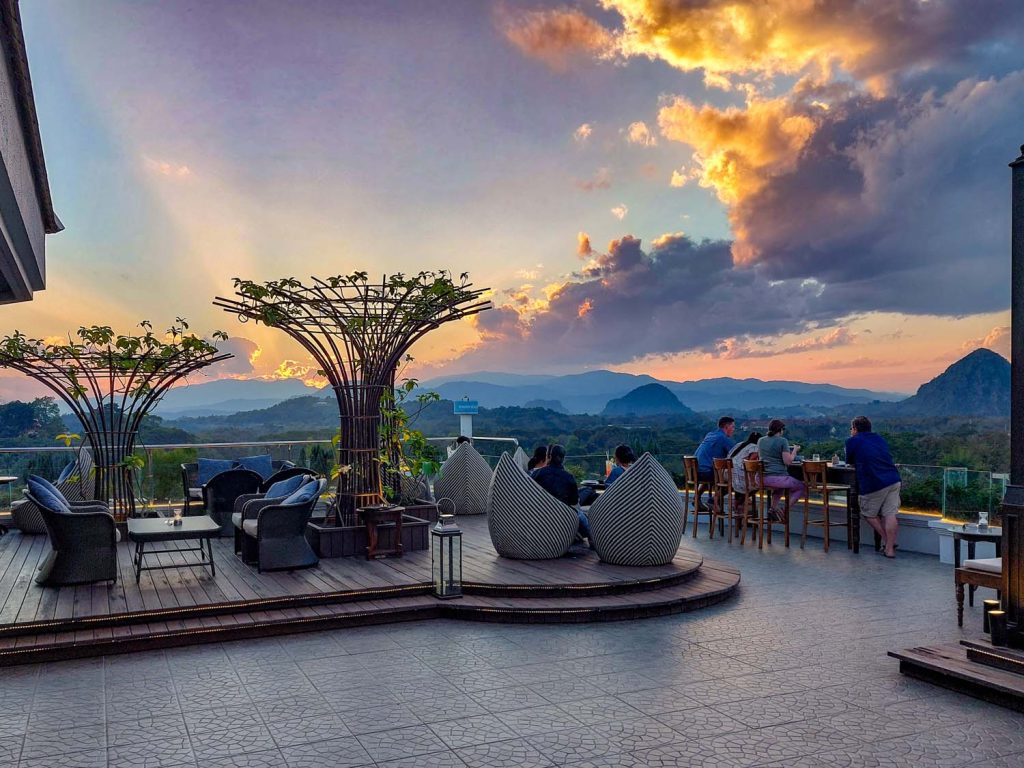
For sky-high sundowners and a stunning sunset, The Peak atop the upmarket Riverie Hotel is a must-visit spot for cocktails or a romantic dinner and some dazzling photos.
Coffee loving couples rejoice, Chiang Rai grown and roasted beans, at the hands of skilled baristas, deliver some knock-out coffee. In the city centre, try Arabitia Cafe, Akha Hill Coffee and Doi Chaang Coffee, and just south, The Roast Coffee, a personal favourite.
Museums
Mae Fah Luang Art & Cultural Park, under Royal Patronage, houses the region’s most extensive collection of Lanna artefacts in two stunning traditional teak timber halls. Complementing this well maintained and fascinating museum is gloriously maintained gardens, ponds and a quality gift shop.
Oub Kham Museum features the extensive and remarkable collection of museum curator Julasak Suriyachai whose lineage is traced back to a Shan royal family of Kengtung in Burma (Myanmar). Exhibits include royal regalia, handicrafts, and artefacts, displayed in buildings amongst beautiful gardens and courtyards.

Insider tip: close by on Ratyotha Rd is ‘Khaosoi 100 Year Café’ with excellent Khao Soi.
‘Road Trip’ North of the River
Across the Kok River, this short road trip is around 30 km and includes a must-visit café beside the Kok River, unique temples, a museum visit, and a look around the countryside.
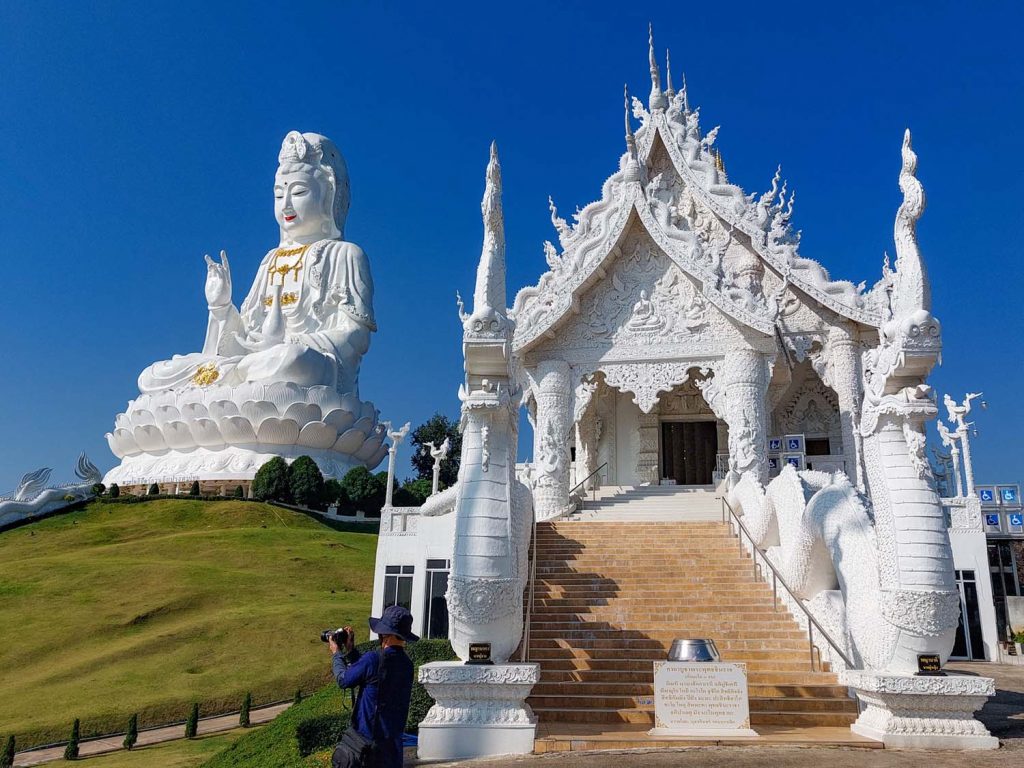
Wat Huay Pla Kang, with the immense gleaming white statue, dominates the landscape and features three impressive structures, including the Phop Chok Dhamma pagoda displaying Thai, Chinese, and European design influences and an all-white (inside and out) Thai style sermon hall. The dominant and imposing white statue of Kuan Im, the Goddess of Mercy, has an elevator to the 25th floor where you take in beautiful district views looking through the eyes of the Goddess. This complex cares for 500+ orphans, and you can help by buying items for donation.
Baan Dam (or Black House) is a museum created by Chiang Rai-born artist Thawan Duchanee, who resided on the complex until he died in 2014. In various classic teak and more unusual igloo-style buildings are many of Duchanee’s artworks and objects, including animal bones, skins, and skulls. It sits within peaceful, well-cared-for grounds.
Insider Tip: Stop at Ruk Raek Coffee immediately adjacent to the museum entrance and carpark for a great organic coffee or tea and a quick snack.

Wat Rong Sear Tean (Blue Temple) is mesmerising with vivid blues and bright golden touches on the roof and eaves. The temple is exquisitely designed and full of Buddhist imagery, including a gigantic, magnificent white porcelain Buddha. Murals adorn the walls inside, while motifs delightfully wind their way around blue pillars. The ceiling is a work of art in itself.

Chivit Thamma Da Coffee House & Bistro is just 300 meters from the Blue Temple and sits on the banks of the Kok River. This coffee house and bistro is a Chiang Rai must-visit.
‘Road Trip’ South – White Temple, Waterfall & Singha Park
Wat Rong Khun (White Temple) is around 13 km south of Chiang Rai. In the style of a Buddhist temple complex, this privately-owned art exhibit was designed and constructed by Thai visual artist Chalermchai Kositpipat. It is a stunning example of contemporary and traditional Thai architecture creating a temple structure unlike any other. The onsite gallery sells artwork by Kositpipat.

About 15 km southwest is Nam Tok Khun Kon National Forest Park. Take this beautiful 30-minute walk along meandering paths to the Khun Kon waterfall, surrounded by rainforest and towering bamboo. With a 70-meter drop, it is the highest waterfall in Chiang Rai. Outside of the wet season, swimming at the base of the falls may be feasible but consult with Park officials first.
Rounding out this 60 km road trip is a visit to Singha Park, a 14 square kilometre recreational wonderland. Visitors have abundant choices with extensive walking and cycling tracks, plus family water activities, rock climbing, and ziplining.
For Instagram fans, the vast fields of pastel-coloured flowers and the rolling tea plantation are a must. Cafes and restaurants are spread throughout this popular park. For something extra romantic and memorable, enjoy a Hot Air Balloon experience or visit during their annual ballooning festival.
‘Road Trip’ East for Cloud Seas
Around 90 km east of Chiang Rai city are the mountains bordering Laos, with Mount Phu Chi Fah the most famous. Most visitors stay overnight, taking the 760-meter hike up an unpaved track to the summit to experience sunrise from the peak’s viewpoint. In Winter, a sea of clouds rolls through the valleys below, providing an eery though evocative scene. And it can be pretty cold in those hours around dawn. A further 12 km from Phu Chi Fah is the less-visited viewpoint, Phu Chi Dao, with magnificent views of the Mekong River in the Laos lowlands below.
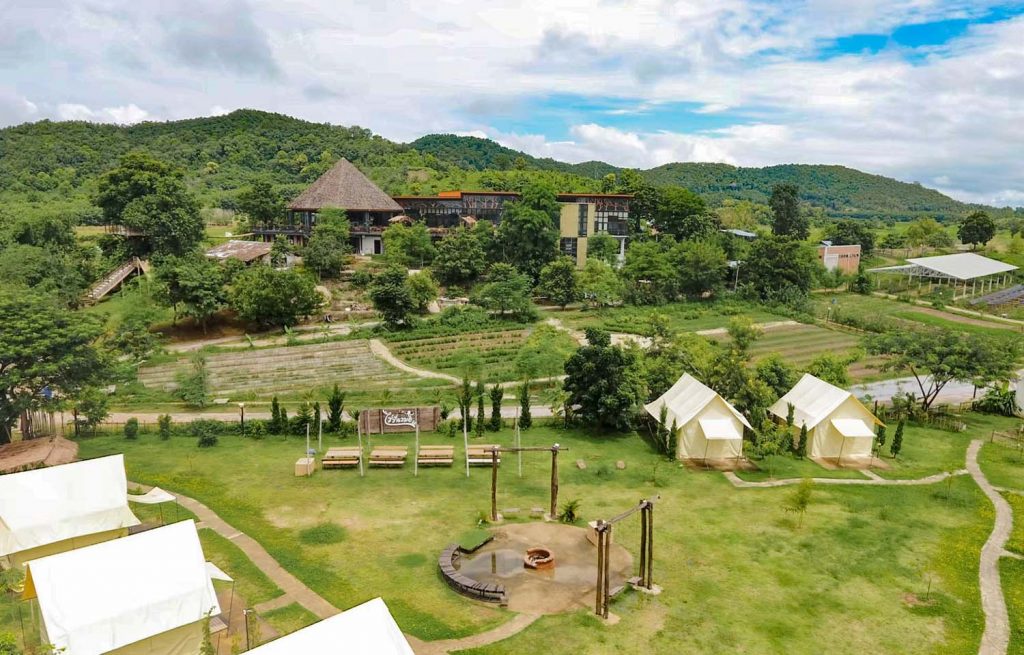
Insider Tip: Detour to the impressive organic farm, restaurant, and glamping site, Rai Ruen Rom, on your journey out or back. Enjoy a healthy meal in the café, browse their shop with unique gifts and souvenirs and wander the gardens and farm.
Golden Triangle Loop (3-5 days)
This extended loop takes you through many of the highlights of the Golden Triangle region, including Chiang Saen, 60 km northeast of Chiang Rai, the Golden Triangle Viewpoint, Doi Tung, Mae Salong and more.

One of the oldest cities in Thailand, Chiang Saen, was established early in the 14th century. It was a strategic border post of the Lanna Kingdom, an important centre of Buddhism, and a vital stop-off point along the old Chinese-Siam river trade routes. After a turbulent history, including being captured by the Burmese and then destroyed by King Rama I, Chiang Saen became a ghost town for several hundred years.

Present-day Chiang Saen is low key with its historical past and old city ruins as part of its attraction. While you’re in town, visit the Chiang Saen National Museum and some impressive temples, such as Wat Pa Sak, Wat Phra Chao Lan Thong, and Wat Phra That Pha Ngao. Stroll along the banks of the Mekong River, bicycle around the monuments, and enjoy inexpensive, delicious local food at street-side vendors. Bird enthusiasts will enjoy Chiang Saen Lake, especially during the migratory season. Sunsets over the lake can also be spectacular.
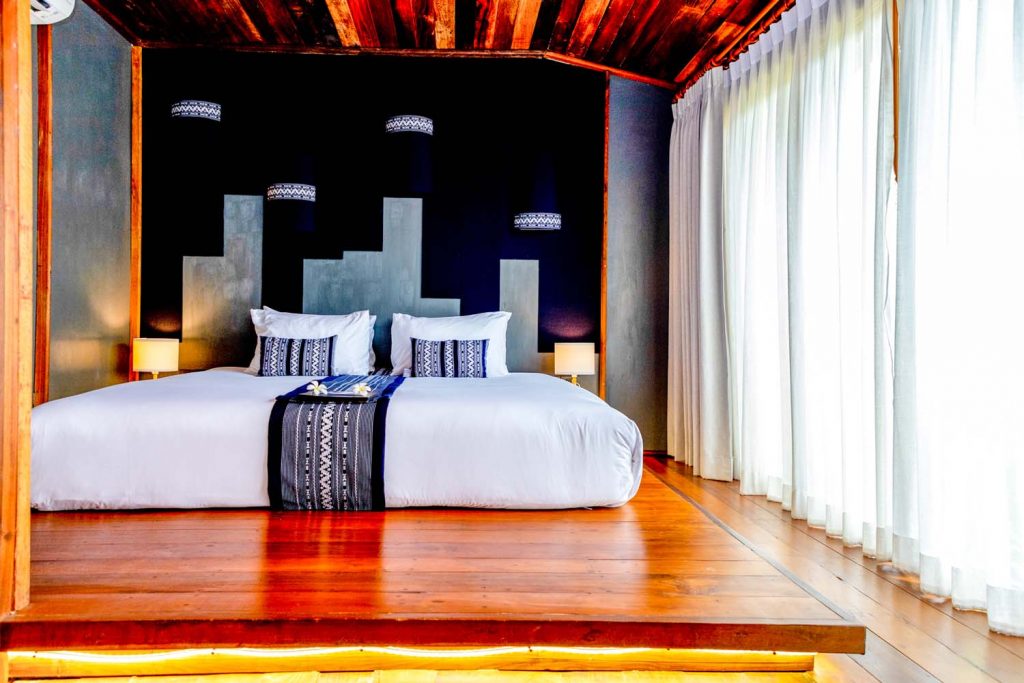
To further tap into the local history, stay at the family-owned and run Athita The Hidden Court boutique hotel, situated just 70 meters from the Mekong and next to the 700-year-old Wat Athi Ton Kaew. The family are keen to share their heritage and culture with guests, making this an ideal base.
Golden Triangle Viewpoint About 11km north of Chiang Saen is the village of Ban Sop Ruak, the tripoint of Laos, Myanmar, and Thailand. The Ruak River forms the border between Thailand and Myanmar and joins the Mekong at this point. Great photo opportunities abound, including a Golden Buddha (Phra Chiang Saen Si Phaendin) sitting atop a specially constructed metal and glass boat on the riverside. Longboat trips on the Mekong are also available.
A few kilometres from this point is the expansive Hall of Opium Museum and a highly recommended stop. The museum tells how Royal sponsored initiatives, including specific programs from Her Royal Highness the Princess Mother, turned the denuded mountains of the region from illegal poppy growing and opium drug production to more uplifting and inclusive community development outcomes. Such programs are still positively serving local communities many years on.
Golden Triangle Mountain Communities

Mae Sai
From the tri-border point, road trippers can head northwest around 50 km to the bustling border town of Mae Sai, Thailand’s northernmost point. At the border immigration point, there is the potential for a brief crossing into Myanmar for a photo opportunity. Approximately 12 km south of Mae Sai, though off the highway, is Tham Luang – Khun Nam Nang Non National Park, where the now-famous cave rescue played out over 18 days in mid-2018. National Parks have now created an information display showing how the rescue unfolded.
Doi Tung – Mae Fah Luang Region
If time is short, head straight from the Mekong (40-50 km trip) to the Doi Tung (Tung Mountain) region, the centrepiece of many of the change initiatives highlighted in the Hall of Opium Museum. For the last 30 years, the Doi Tung Development (Social Enterprise) Project has been the driver of change. Creating a region that now boasts sustainable communities focused on high-value crops like coffee and macadamia nut, plus thriving (and international award-winning) ceramics, textiles, and handicrafts.
Must-sees include the spectacular 10-acre temperate-climate Mae Fah Luang Garden. Tour the Royal Villa, a Swiss Style Chalet built for the late Princess Mother when she was in the region. Learn how the Royal Family positively impacted this region and its Hill Tribe communities at the Hall of Inspiration. If open, challenge yourself on the suspension bridges of the Doi Tung Tree Top Walk. Be tempted in the Doi Tung boutiques, enjoy Doi Tung coffee, and if staying overnight, the highly regarded romantic Doi Tung Lodge rounds out your mountain-top experience.
Mae Salong
From Doi Tung, you can drive across the mountain tops to the tea-growing region of Mae Salong (approximately 45 km) while being rewarded with sensational verdant outlooks as you traverse the winding roads.
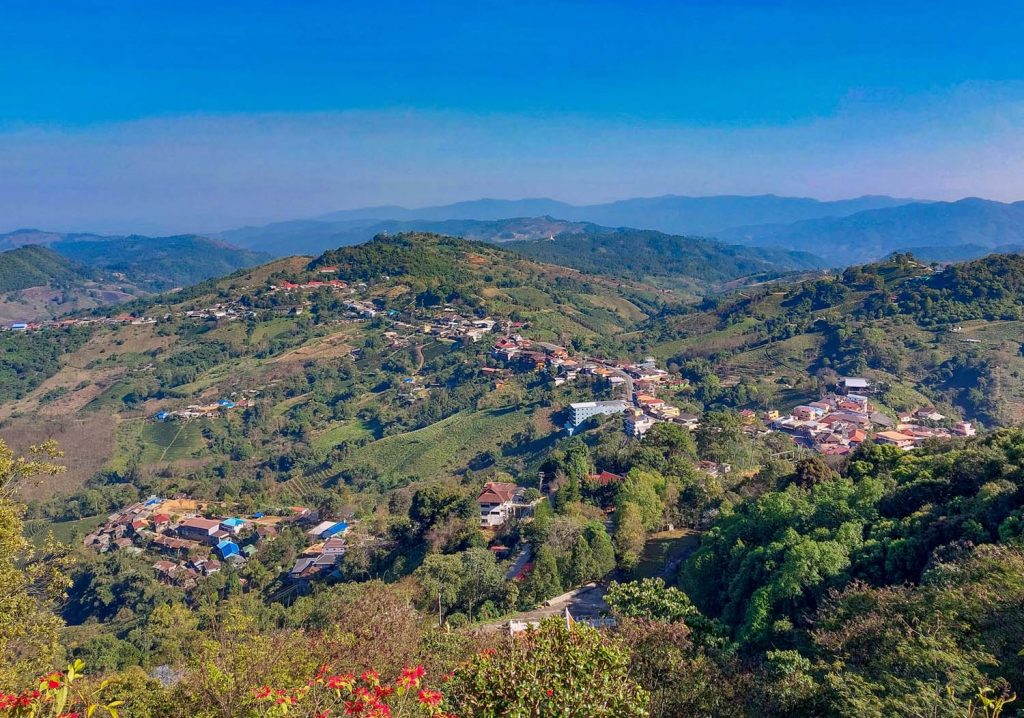
Mae Salong (also called Santikhiri) has long been an Akha hill tribe community. Its population grew by a few thousand ethnic Chinese nationalists who fled their homeland in 1949, after the Communist Revolution. The Thai government gave them citizenship on the agreement they become trusted members of the community and established Oolong Tea, mushrooms, and such agricultural products. The town is built along a meandering narrow ridge, with lanes and streets running off the main (ridge) road.
Tea production is undoubtedly a big part of this region, as visits to Tea Plantation 101 or Wang Put Tan Tea Plantation demonstrate. Several Chinese tea houses in town provide samples and packaged tea to take home. Coffee is also grown in the region and is worth seeking out for coffee lovers.
Other attractions include the Chinese Martyrs’ Memorial Museum, which tells their story and how the Chinese immigrants helped the Thai Army root out communist insurgence in Thailand as part of their settlement deal. Hilltop Phra Boromathat Chedi (Thai-style stupa) overlooks Mae Salong village with rewarding views and is worth driving up. This glorious Wat was built in honour of the late Princess Mother and is very restful.
The early morning market is excellent for discovering the local produce and securing your Akha hill tribe handicraft. A selection of the local eateries offer tasty Dim Sum and Yunnan style noodle dishes and are worth seeking out. And while wandering the central (ridge) road, check out the street art murals telling humorous local stories. There is a broad selection of accommodation in Mae Salong, and we enjoyed this boutique family run Guest House that had outstanding town and district views.
Mae Salong to Chiang Rai
The return journey to Chiang Rai from Mae Salong is about 60 km, taking you back through regional communities and farmlands before joining Highway 1 back to the city and Chiang Rai airport.
Chiang Rai and the Golden Triangle region have so much more to offer as you take the time to explore. We hope the details provided here inspire you to make the trip and sample the delights of Thailand’s far north for yourself.
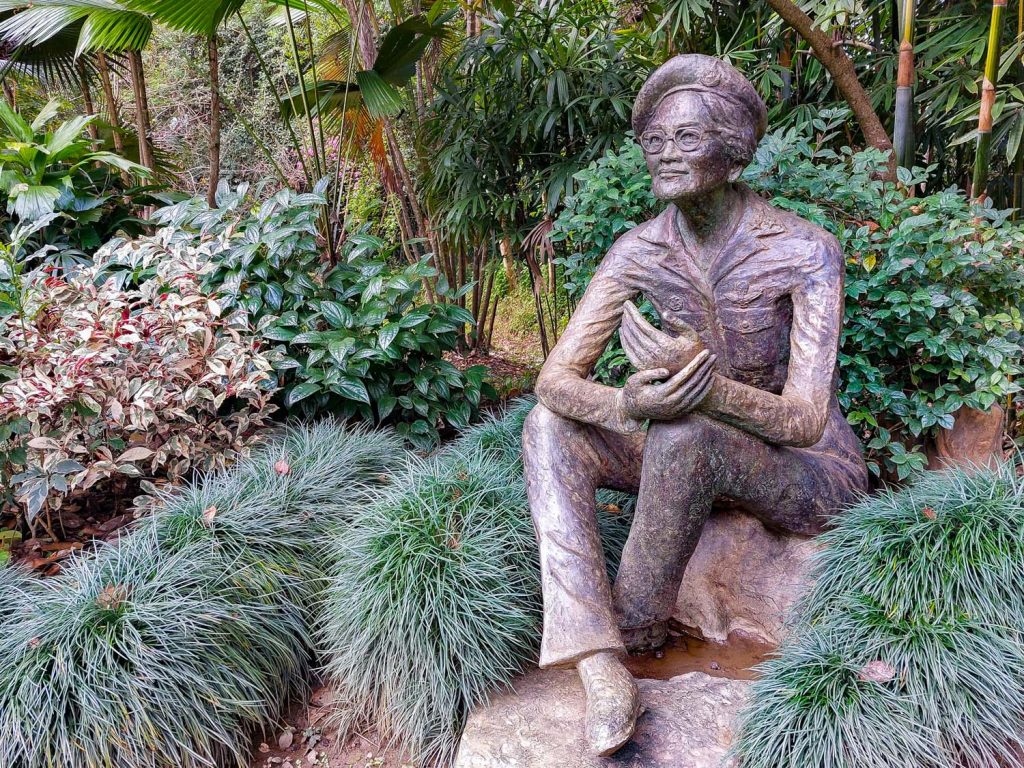
Words and images: Michael Cullen.

